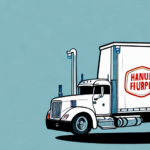Understanding the Importance of Courier Routing
Courier routing is a critical component for businesses that depend on timely delivery of goods. An optimized routing process can save time, reduce costs, and enhance customer satisfaction. Effective courier routing involves planning and organizing the most efficient delivery paths by analyzing various factors such as delivery locations, traffic conditions, and package sizes.
- Time Savings: Efficient routes minimize travel time between destinations, enabling faster deliveries.
- Cost Reduction: Optimized routing decreases fuel consumption, vehicle wear and tear, and staffing expenses.
- Customer Satisfaction: Timely and reliable deliveries lead to increased customer loyalty and positive reviews.
- Operational Visibility: Real-time tracking allows businesses to monitor deliveries and address issues promptly.
Implementing a streamlined courier routing system is essential for maintaining competitive advantage and ensuring smooth business operations.
Common Challenges in Courier Routing and Delivery
Despite its benefits, courier routing presents several challenges:
- Traffic Congestion: Heavy traffic can delay deliveries and increase operational costs.
- Weather Conditions: Adverse weather like rain, snow, or ice can disrupt delivery schedules and safety.
- Package Size and Weight: Larger or heavier packages may require specialized vehicles and handling, increasing costs.
- Remote Locations: Delivering to remote areas can complicate route planning and extend delivery times.
- Real-Time Tracking: Ensuring accurate and real-time tracking requires significant investment in technology.
Addressing these challenges is crucial for developing a robust courier routing strategy that ensures efficiency and reliability.
Developing an Effective Courier Routing Strategy
Step-by-Step Guide to Mapping Delivery Routes
- Identify Delivery Locations: Compile all delivery addresses and categorize them based on proximity and priority.
- Analyze Traffic Patterns: Utilize traffic data to avoid peak congestion times and optimize delivery windows.
- Consider Package Specifications: Allocate appropriate vehicles based on package sizes and weights.
- Select Optimal Routes: Use route optimization tools to determine the most efficient paths for drivers.
- Provide Clear Directions: Equip drivers with turn-by-turn navigation to minimize confusion and delays.
- Monitor and Adjust: Continuously track delivery progress and adjust routes as necessary to accommodate unforeseen changes.
Incorporating Customer Preferences
Understanding and integrating customer preferences, such as specific delivery times or locations, can significantly enhance the delivery experience. Tailoring routes to meet these preferences not only improves satisfaction but also fosters loyalty.
Leveraging Technology for Optimal Courier Routing
Advanced technologies play a pivotal role in enhancing courier routing efficiency:
- GPS Tracking: Real-time tracking of delivery vehicles ensures accurate updates and route adjustments.
- Route Optimization Software: Tools like TomTom and Gurobi analyze delivery patterns to suggest the most efficient routes.
- Mobile Devices: Enable drivers to receive updates, navigate routes, and communicate effectively.
- Automated Notifications: Inform customers about delivery statuses, estimated times, and any potential delays.
Implementing these technologies can lead to significant improvements in delivery speed, cost-efficiency, and overall performance.
Best Practices for Maximizing Routing Efficiency
- Regular Strategy Evaluation: Continuously assess and refine routing strategies to adapt to changing conditions.
- Prioritize Deliveries: Assign higher priority to time-sensitive packages to ensure timely delivery.
- Contingency Planning: Develop backup plans for unexpected events like traffic jams or vehicle breakdowns.
- Driver Training: Equip drivers with the necessary skills and knowledge to navigate routes efficiently.
- Sustainable Practices: Optimize routes to reduce fuel consumption and minimize environmental impact.
Adhering to these best practices ensures that courier routing remains effective and responsive to both business needs and customer expectations.
Measuring and Evaluating Routing Success
To ensure the effectiveness of your courier routing strategy, it's essential to track key performance metrics:
- Delivery Times: Monitor the average time taken for deliveries to identify any delays.
- Operational Costs: Track expenses related to fuel, maintenance, and staffing to assess cost-efficiency.
- Customer Satisfaction: Collect feedback and measure satisfaction levels to gauge service quality.
- On-Time Delivery Rate: Calculate the percentage of deliveries made within the promised timeframe.
Regularly analyzing these metrics allows businesses to identify areas for improvement and make informed decisions to enhance routing efficiency.
The Future of Courier Routing and Delivery
The courier industry is evolving with the introduction of innovative technologies:
- Autonomous Delivery Vehicles: Self-driving vehicles promise to reduce labor costs and increase delivery speeds.
- Drones: Offer rapid delivery options, especially for remote or hard-to-reach areas.
- Artificial Intelligence: Enhances route optimization by predicting traffic patterns and adjusting routes in real-time.
Companies like Amazon and UPS are pioneering these technologies, setting the stage for a more efficient and innovative future in courier routing and delivery.
Conclusion
Optimizing courier routing is essential for reducing costs, saving time, and enhancing customer satisfaction. By addressing common challenges, developing a robust routing strategy, leveraging advanced technologies, and adhering to best practices, businesses can achieve significant improvements in their delivery operations. Additionally, staying abreast of emerging trends ensures that companies remain competitive and continue to meet evolving customer expectations. Investing in effective courier routing strategies today paves the way for a more efficient and successful tomorrow.




















